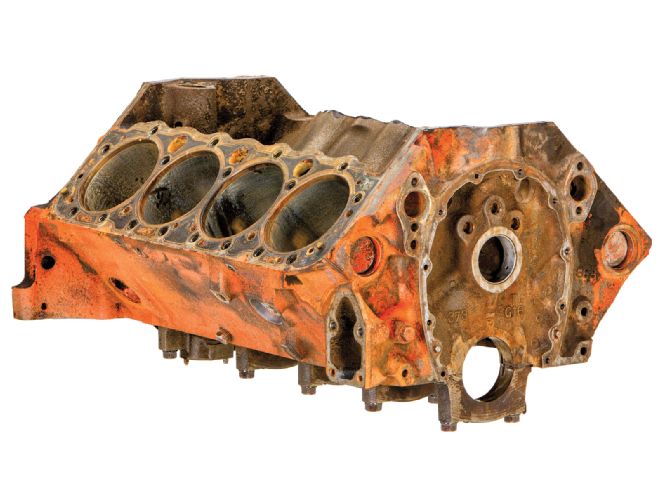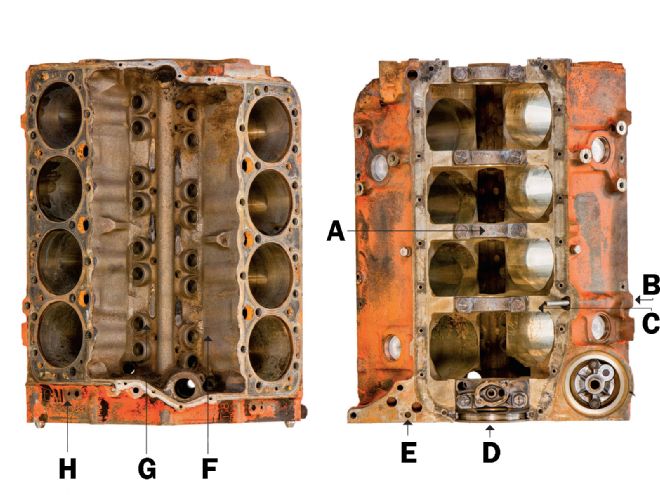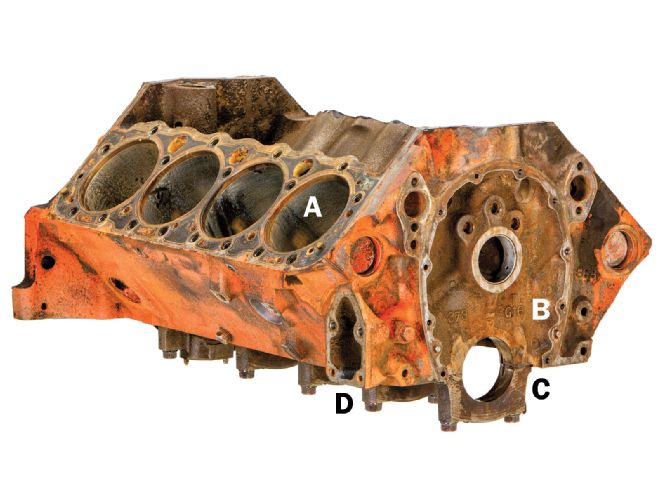How To Buy A Stock Chevy 350 Block - Hot Rod Magazine


- A. Occasionally, blocks will crack above the main caps, upward and toward the valley. This usually happens in the middle bearings, but sometimes there are multiple cracks over the four main bearings. The '79–'85 blocks have right-side dipsticks. Replacement blocks from Mexico can have left and right dipstick ports.
- B. The '55–'79 blocks have a left-side dipstick.
- C. If the engine has been stressed with too much power or too many rpm for extended periods of time, four-bolt main caps will develop a hairline crack that will follow the line of the bolt on the outside.
- D. The '86-up blocks use one-piece rear main seals. They require a different oil pan.
- E. Check starter boltholes to make sure they are not cracked or broken off and welded back on.
- F. Most cracks in small-blocks are in the valley, particularly above the lifter bosses, where the wall to the water jacket can be thin.
- G. Early-style small-blocks will sometimes have lifter bosses that are too tall for hydraulic lifters.
- H. The block ID number is on the driver side above the bellhousing. There are plenty of websites with the listing of casting numbers. Print out a page and carry it with you.

- A. You can't tell the quality of previous machine work with your naked eye. The 350s are getting so old that many have already been bored over, so check the bore and do your own machining. Assume nothing!
- B. The '96-up timing-cover rail is wider and has a plastic six-bolt timing cover.
- C. Check for score marks on the main-bearing bores in the main caps, which can appear if a bearing gets spun. Also make sure the caps are not discolored black, indicating friction overheating.
- D. You can find '86-up engines with or without a fuel-pump mounting pad or divisions for a roller cam.


